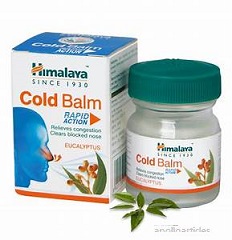Cold Balm Canada
Description
Cold balm is a medication used by people to treat pains of joints and muscles, such as backache, arthritis, and sprains and minor aches. It contains methyl salicylate and menthol as its active ingredients, and these chemicals are counterirritants. They both work by warming the skin and causing it to feel cool. These sensations distract patients from the feelings of pains and aches in their joints, muscles, and tendons. Cold balm provides users with a cooling sensation when it’s applied to the skin. Sometimes, this medicine is also used as an effective chest rub to relieve cough caused by common cold and soothe chest congestion.
How to Use Cold Balm
 You need to follow all the directions given by doctors or written on the label. It’s not allowed to apply Cold balm on your mouth, eyes, genitals and nose. This medicine is not intended to be used by children who are young than 2. Wash your hands before using it and apply a thin layer to affected areas 3-4 times a day. Don’t apply Cold balm to the skin that is irritated or injured. Don’t tightly wrap or bandage the affected areas, because you will only increase a possible risk of side effects. You may only cover this skin area loosely to protect your clothes.
You need to follow all the directions given by doctors or written on the label. It’s not allowed to apply Cold balm on your mouth, eyes, genitals and nose. This medicine is not intended to be used by children who are young than 2. Wash your hands before using it and apply a thin layer to affected areas 3-4 times a day. Don’t apply Cold balm to the skin that is irritated or injured. Don’t tightly wrap or bandage the affected areas, because you will only increase a possible risk of side effects. You may only cover this skin area loosely to protect your clothes.
Heat increases a possible risk of side effects, so you shouldn’t apply Cold balm before or after the activities that increase your skin temperature. Don’t use tanning beds or sunlamps on treated areas and don’t expose the affected areas to heat from heating pads, hot tubs and saunas. Don’t apply Cold balm before 30 minutes and 1 hour after taking a shower or bath. If you suspect overdosing, get emergency medical help. This medicine is available in a variety of strengths to suit the needs of all consumers. Inform doctors if your health condition doesn’t improve within 7 days.
Possible Side Effects
Just like other pharmaceutical products, Cold balm may cause certain side effects, but most of them are mild and rare, including burning and stinging, warmth and redness.
However, if any of these adverse effects worsen or persist, you need to contact your physician at once. The good news is that most people who use Cold balm don’t experience any severe side effects. If you experience any of the following troubling symptoms, you need to stop its use and contact your doctor immediately: unusual and increased pain of affected areas, ringing in ears and blistering, severe vomiting and nausea, breathing issues after applying it on the throat or the chest, swelling and severe redness.
Allergic reactions to Cold balm are quite rare, and they’re indicated by such symptoms as itching, swelling, skin rash, trouble breathing and severe dizziness. Get emergency medical help once you notice any of them.
Important Precautions
Before you start this treatment, inform doctors if you have any possible allergic reactions and other pre-existing medical conditions, such as nasal polyps, asthma and irritated or injured skin. Pregnant and nursing mothers are allowed to use Cold balm only when it’s clearly needed.
Dangerous Drug Interactions
There are certain medications that should be avoided when using this medicine, because they may lead to unwanted drug interactions that change the way it works and increase a risk of side effects. Don’t use Cold balm along with blood thinners. Inform doctors about all the other medications you’re using, including herbal supplements, vitamins, minerals, prescription and over-the-counter drugs. Don’t change their doses or start new treatments without consulting doctors.

